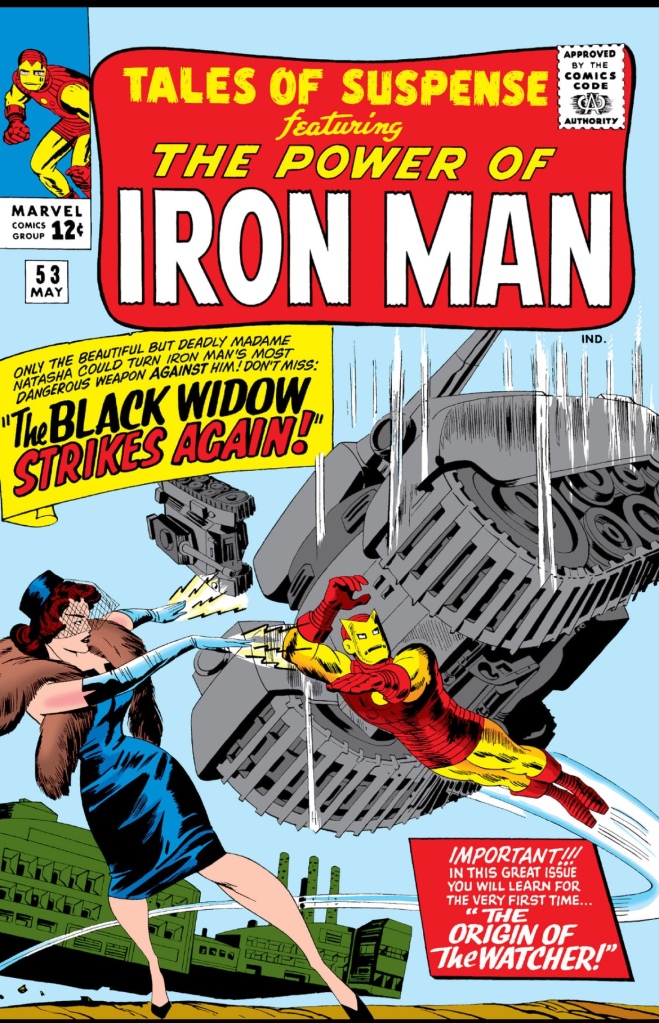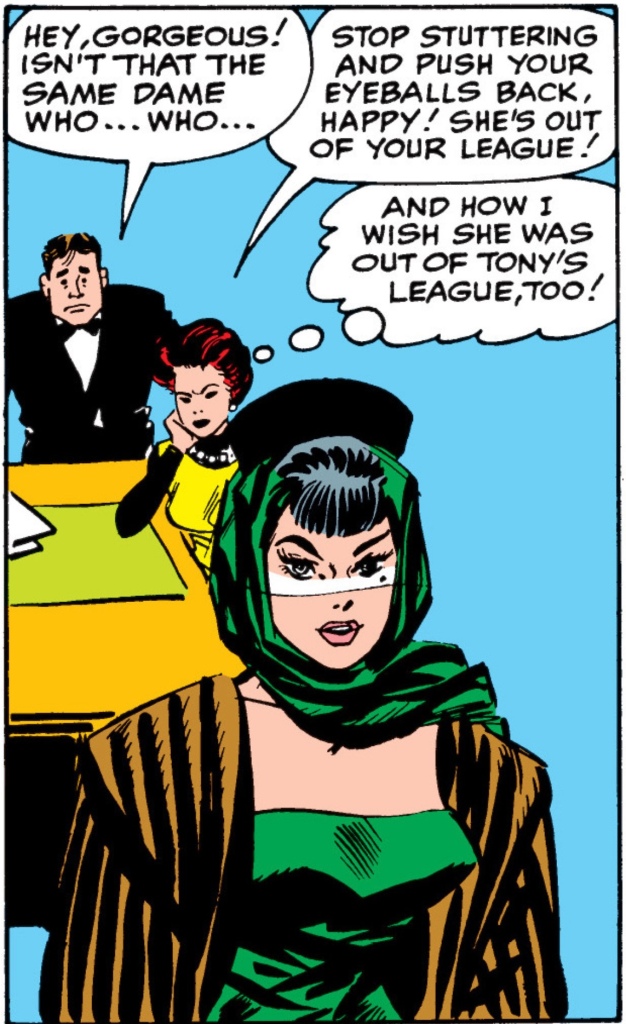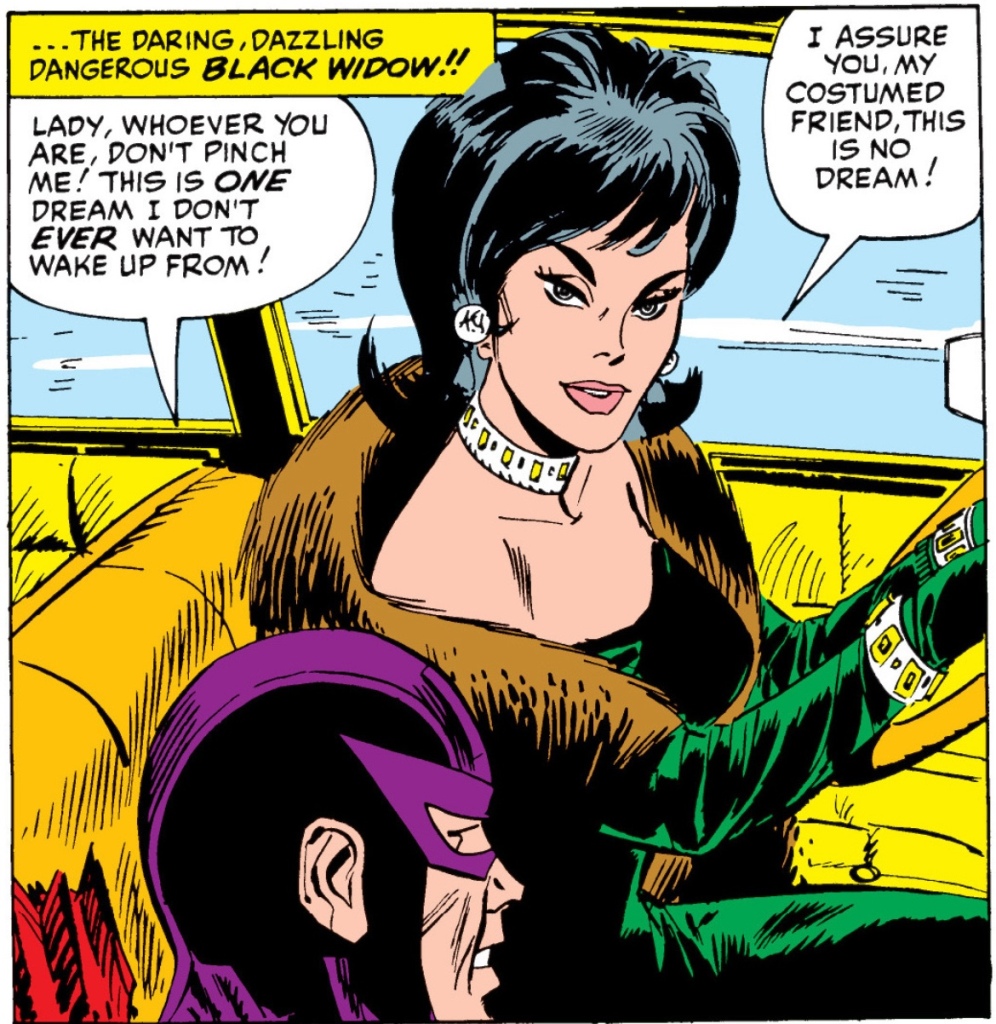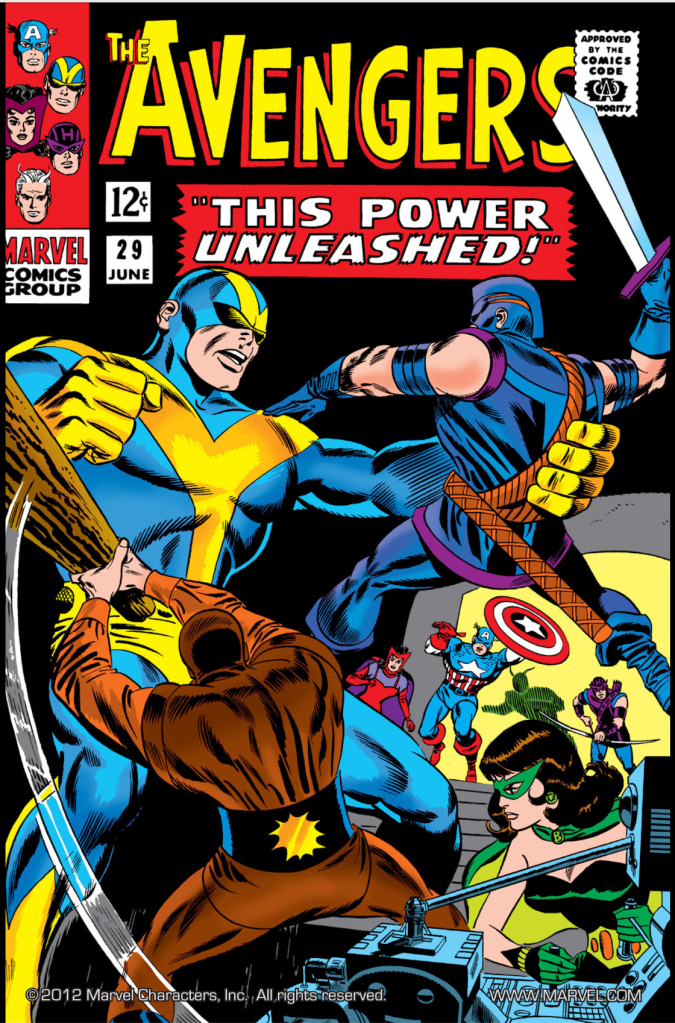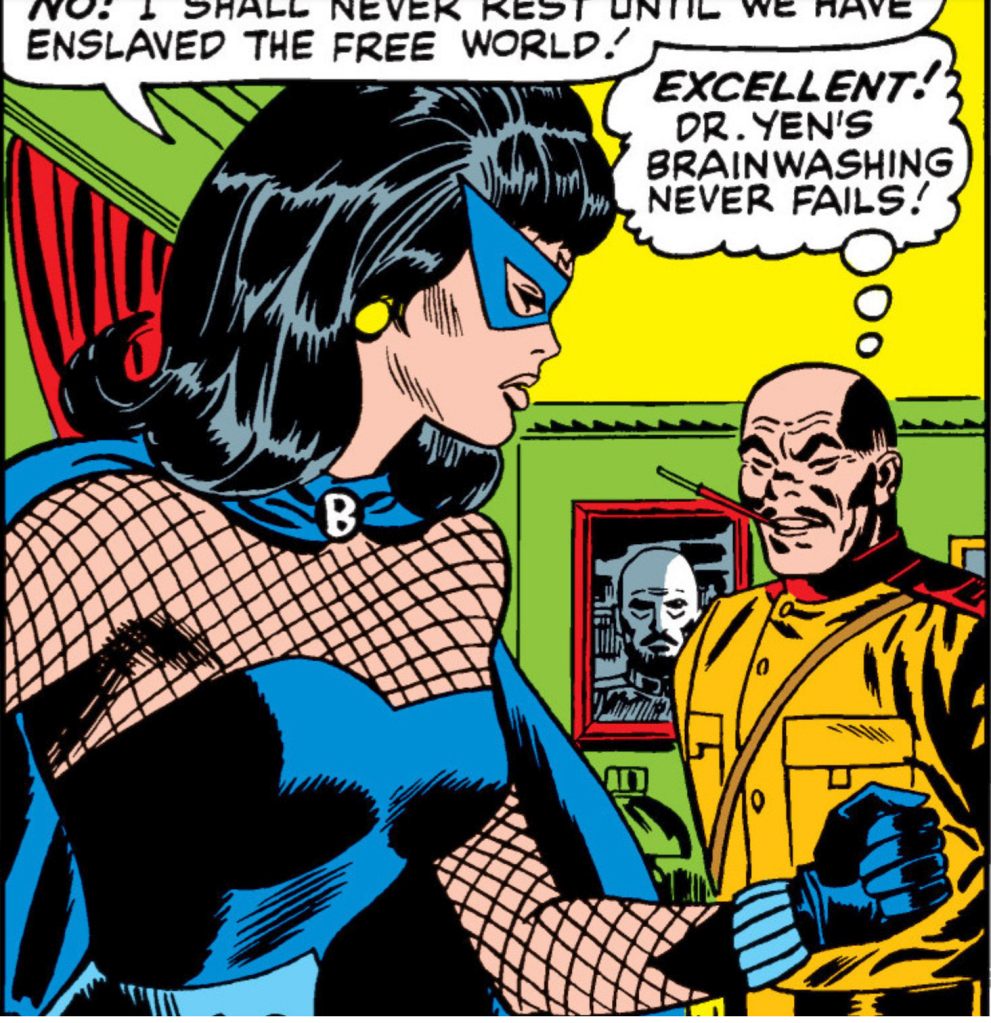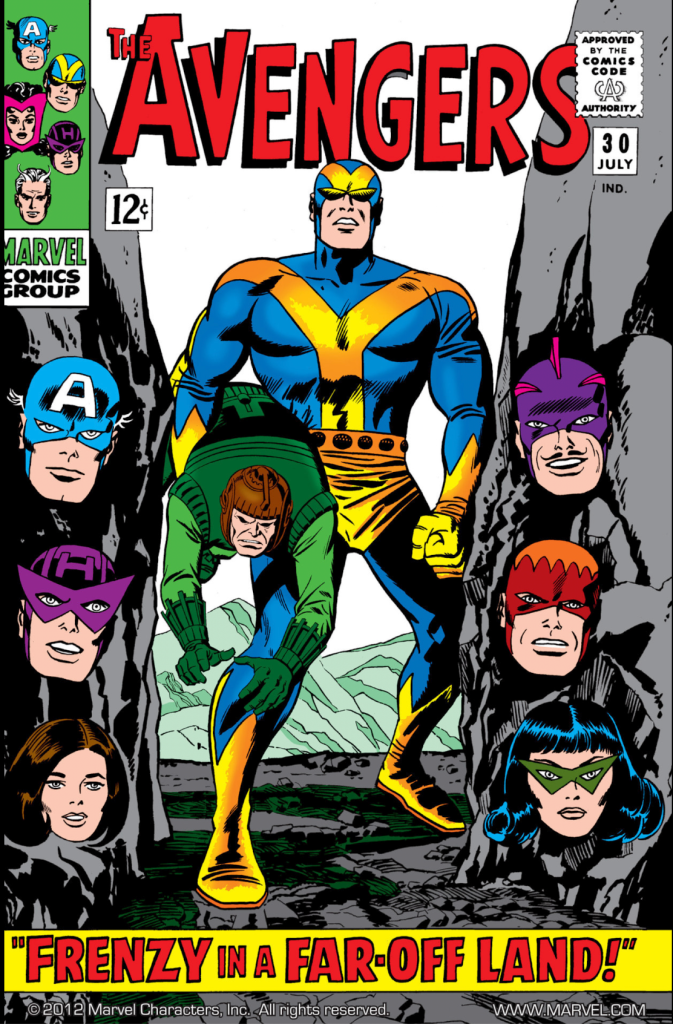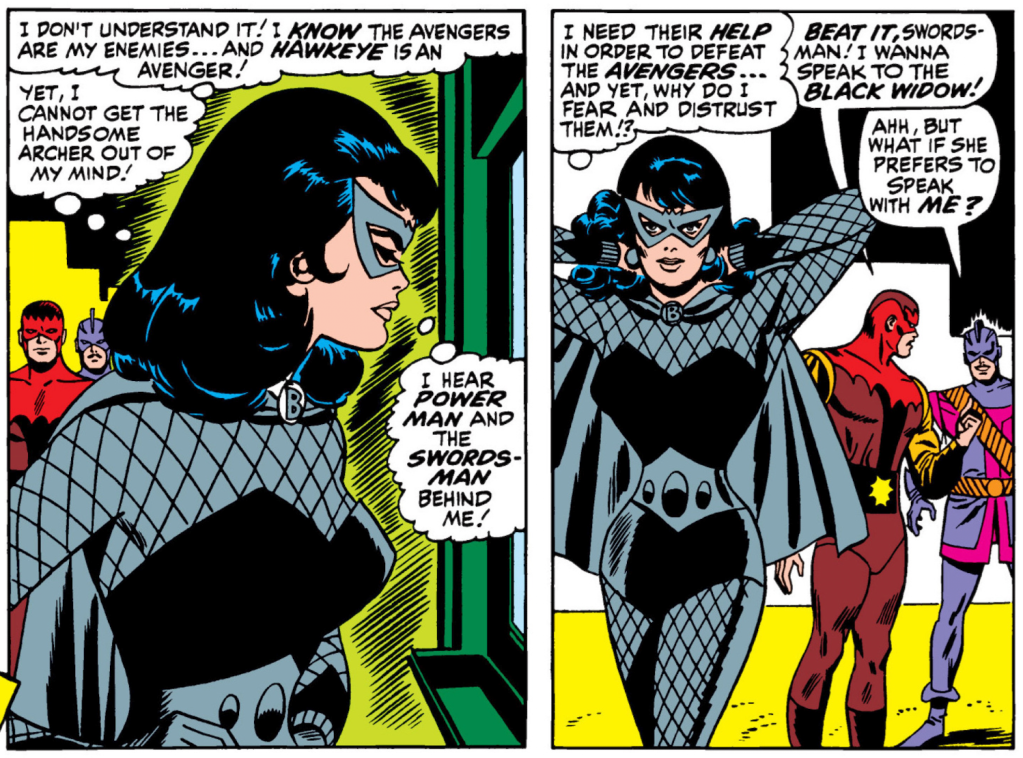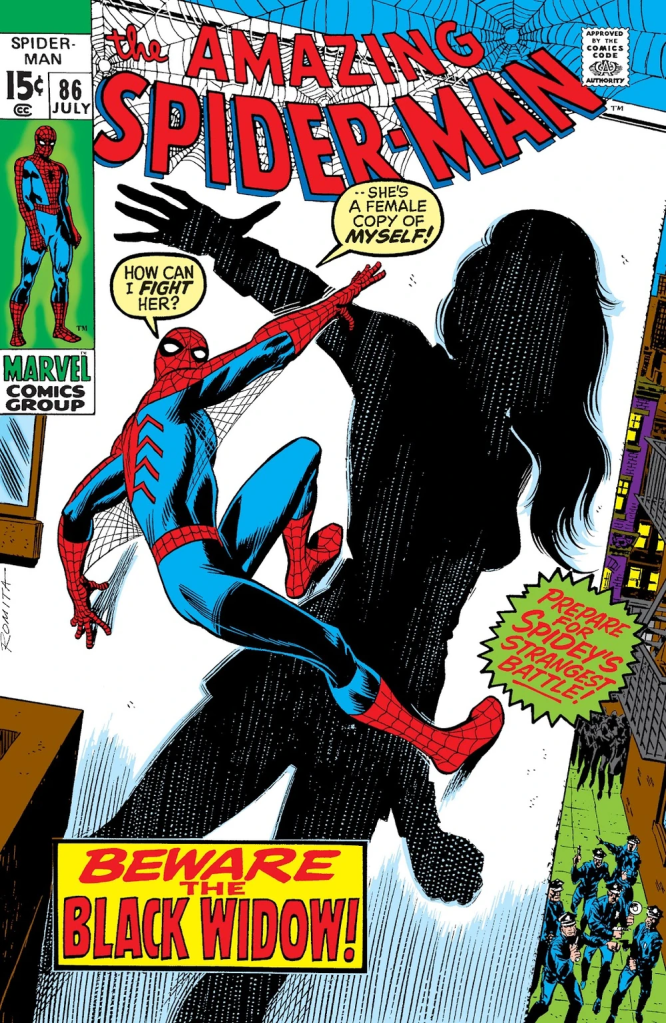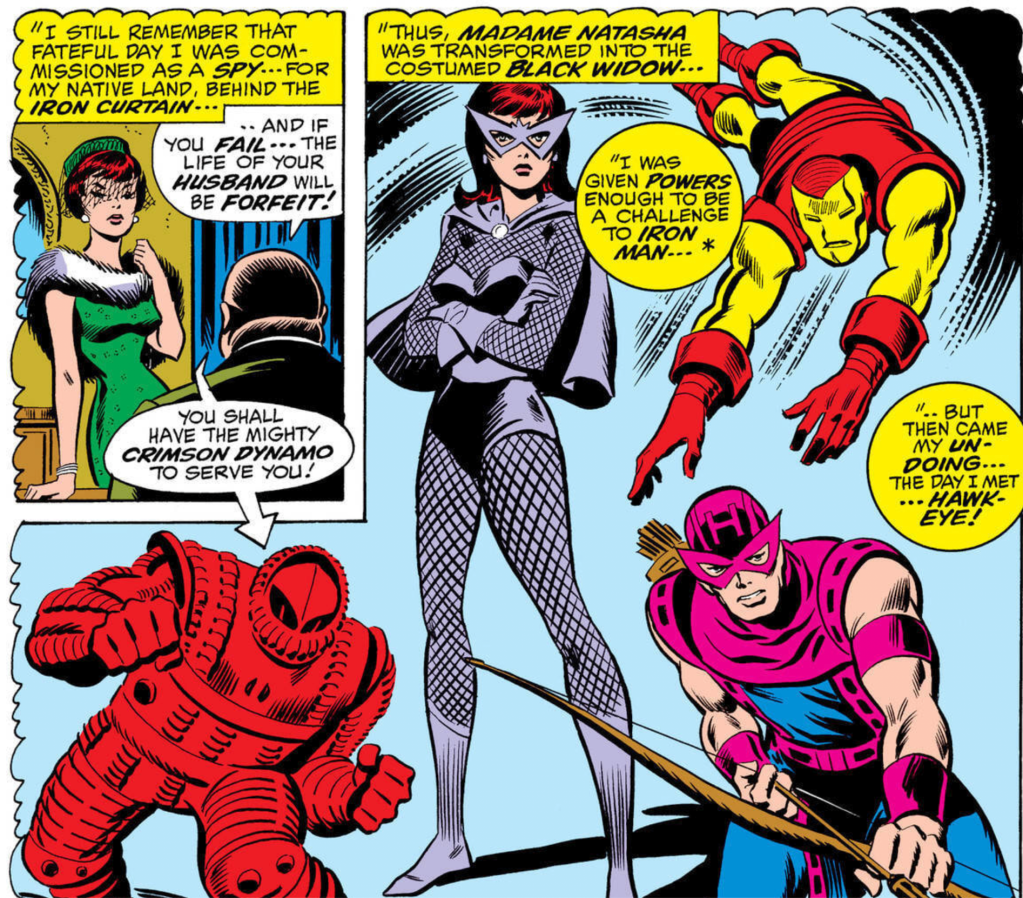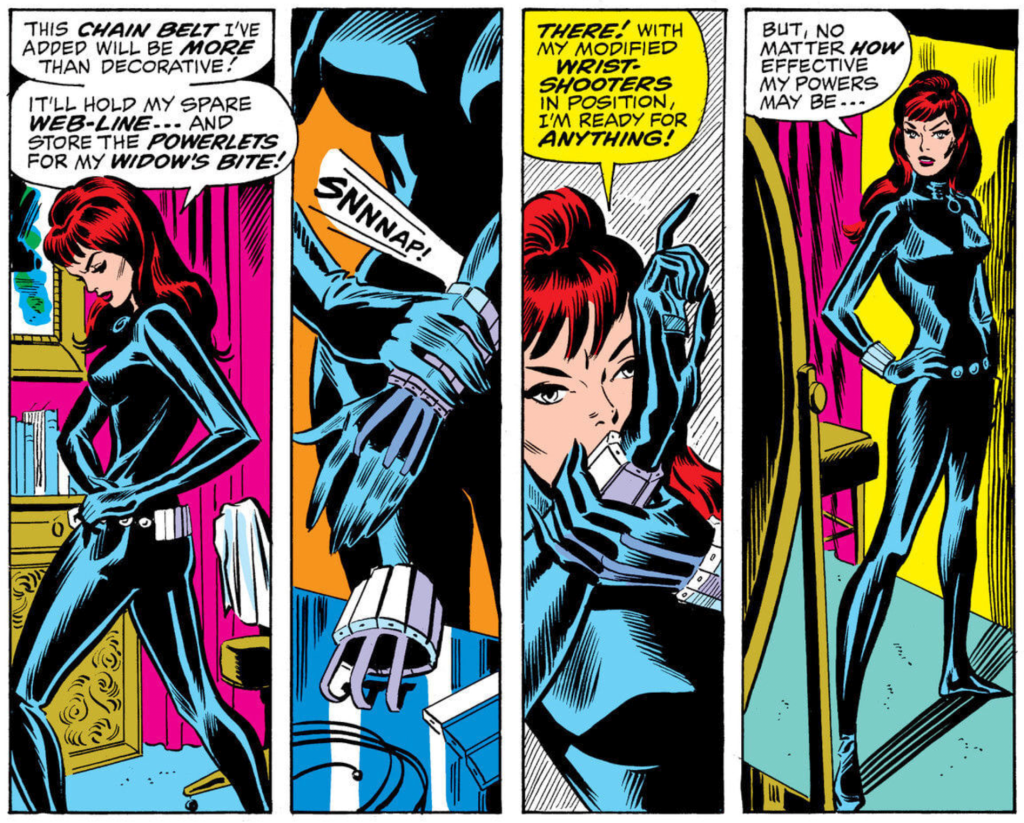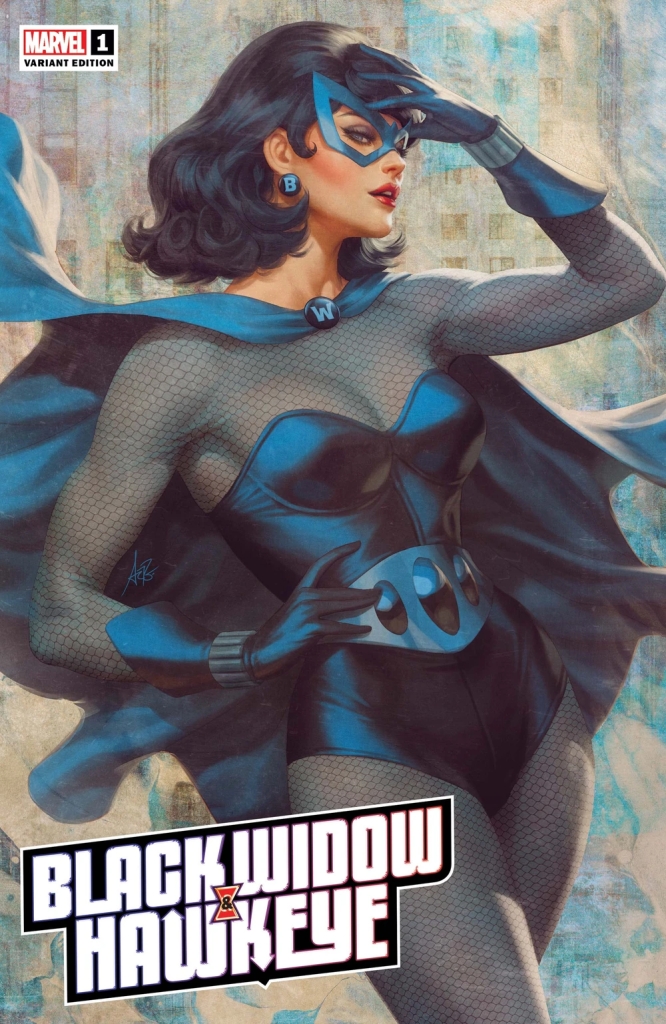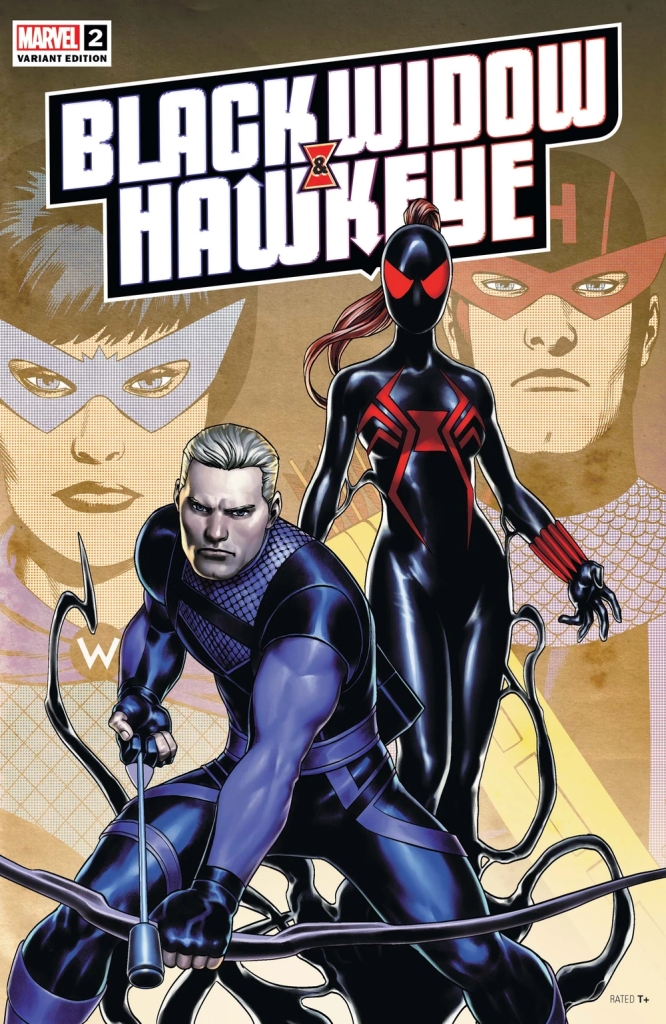[Header Panel from Tales of Suspense (v1) 57; Don Heck, artist]
After writing a blog series on Black Widow, I searched for an opportunity to turn that work into a book, despite my own trepidation about committing to another book.
The proposal process proved to be frustrating and even deflating (a couple strong publishers were encouraging before passing on the project). Recently, however, I reached out to a friend/colleague with a series at Brill and found a home for my Black Widow volume.
I have noted often how important having my blogging as drafts for projects is to my work, and with this series-to-book, I am again convinced of the power of blogging as an entry point to more traditional work.
Using the blog posts as first drafts, I have begun the work of rewriting, drafting new material, and replacing hyperlinks with academic citation (the least enjoyable aspect of the work).
So far the most exciting part of this project is the new material, often grounded in my discovering and learning about how Black Widow has been included in the print comics since the early 1960s (and I will have to fully add her MCU appearances since the blog series covered the comic books only).
Comic book scholarship is fascinating and challenging because so much of the work requires writing in text about a visual medium (and for me that seems deeply reductive similar to reducing a poem to “the theme of the poem is X”).
Here, then, I want to allow us to revel in the visual, focusing on the first portrayals of Black Widow in the Marvel Universe:
- Tales of Suspense (v1) 52, 53, 57 (1964)
- Avengers (v1) 29, 30 (1966)
- Amazing Spider-Man 86 (1970)
The three issues of Tales of Suspense are the first appearances of Black Widow, and Black Widow’s first appearances with the Avengers (the team with which she is now popularly associated) are a mixture of her relationship with Hawkeye (initiated in Tales of Suspense 57) and her origin as an enemy agent.
Amazing Spider-Man 86 represents the rebooting of Black Widow as the contemporary super-agent many people recognize today (primarily from the MCU and Scarlett Johansson’s portrayal).
The three early appearances are also examinations of the early days of Marvel, the blur and contradictions of multiple creators working in the Marvel Method, and the relatively less sophisticated publication process of comic books seven decades ago.
So here are some fun examples of the unintended multiverse of portrayals of Black Widow in the beginning.
As I examined in the blog series and will expand in the book, Marvel over the decades has hypersexualized and underestimated Black Widow as a character. Often, Black Widow is trapped in the writer/artist’s and reader’s gaze with her body either bound or exposed.
It is quite interesting, then, to look over the jumbled portrayals of Black Widow’s outfits/costumes and hair in these first representations.
Tales of Suspense (v1) featured Iron Man, and issue 52 introduced Black Widow as “Madame Natasha”:

That fist cover image of Black Widow (by Jack Kirby and George Roussos) reveals a Cold War era temptress-spy with her wearing an exotic hat, fur shoulder wrap, and a purple and white dress in the background as Iron Man fights the Crimson Dynamo. Black Widow doesn’t look very heroic in this first image, and oddly, in the interiors, the hat and dress are green, but the exotic outfit remains mostly the same in terms of the hat and a fur shoulder wrap (although the images are not consistent with the cover):
This jumbling of color and outfits along with contradiction between the covers and interiors are a pattern until the somewhat final reboot of Black Widow in ASM 86.
In Tales of Suspense 53 and 57, Black Widow remains essentially as introduced, with the cover of 53 (by Jack Kirby) reflecting better her clothing in issue 52 (except the color scheme is dark blue and brown hair) and announcing her as “gorgeous, but deadly” on the opening splash page (where her clothing is once again green and her hair black):
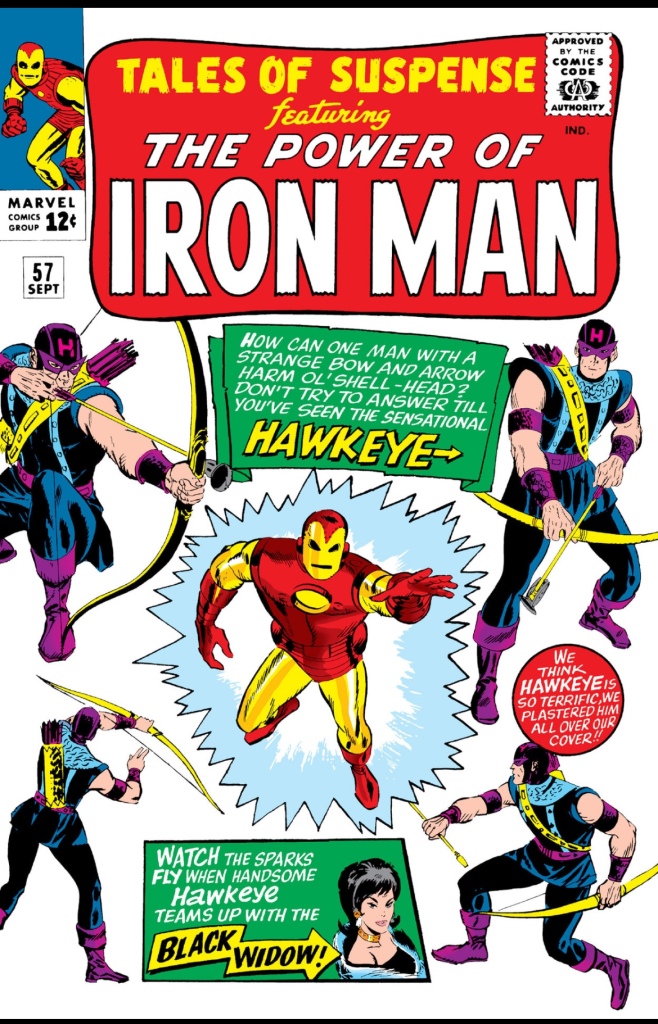
Next, Black Widow appears in Avengers (v1) 29 about two years after Tales of Suspense. The Don Heck cover reveals a much more identifiable superhero Black Widow with a mask, cape, utility belt, and wrist gadgets; again, the coloring is conflicting with green outfit on the cover and brown hair but blue uniform (with added netting) and black hair in the interior (of note is that Natasha’s hair has a few transformations before settling on red):
Avengers 30 continues Black Widow as Avengers nemesis—the Jack Kirby and Don Heck cover maintaining her black hair but showing a green mask (with this issue interiors having an entirely new black and gray color scheme):
John Romita Sr. would guide Marvel toward Black Widow 2.0 in Amazing Spider-Man (v1) 86 with the now familiar black “patent leather jumpsuit,” maskless, and sporting the iconic red hair for good (see Romita’s explanation here). The John Romita Sr. cover stands today as one of the iconic Spider-Man and Black Widow covers (and note that the silhouette suggests a skirt that never appears in the interior):
On the splash page of issue 86, Black Widow is announced as “a sensational new costumed adventurer,” and then, she is depicted throughout the opening in a grey classic outfit with a mask and cape:

This rebooting issue also includes a couple-page flashback overview of Black Widow in the Marvel Universe, with even more jumbled portrayals:
ASM (v1) 86 serves as the foundational reveal of the Black Widow recognizable today—red hair, black skin-tight suit, and the overall look of a super agent:
These, I think, are fascinating looks at not only the early evolution of Black Widow (often hypersexualized and underestimated), but also Marvel and comic books themselves.
Words are not enough, it seems, when there is an unintentional multiverse of colors and outfits that seem to be gaslighting readers who pay attention.
NOTE
The Black Widow & Hawkeye (2024) miniseries pays tribute to the origins of Black Widow in issues 1 and 2 variant covers:




